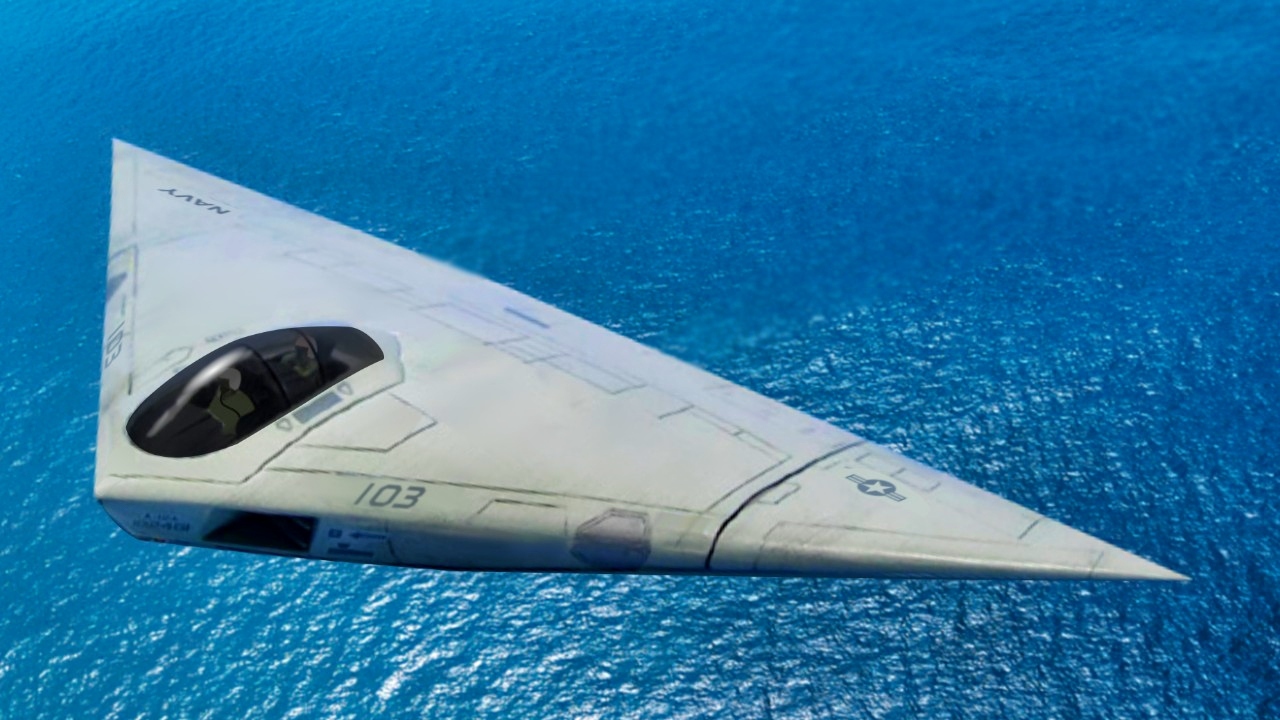
The Ambitious and Controversial A-12 Avenger II Bomber
The A-12 Avenger II was a groundbreaking project developed in the 1980s by McDonnell Douglas and General Dynamics for the U.S. Navy. Designed to replace the aging A-6 Intruder, the aircraft was intended to be a carrier-based stealth bomber capable of operating in heavily defended airspace. Its unconventional design, which earned it the nickname "Flying Dorito," was meant to minimize radar detection and improve its survivability against advanced Soviet air defenses.
Despite its promising concept, the A-12 program faced numerous challenges from the start. The aircraft’s tailless, flying wing configuration was highly experimental, making it unlike any other plane the Navy had ever used. This unique design aimed to reduce the radar cross-section while allowing for internal weapon storage, maintaining a low profile. However, the complexity of integrating stealth technology with carrier-based operations introduced significant technical hurdles.
The Need for a New Aircraft
By the 1980s, the U.S. Navy recognized that the A-6 Intruder, which had served since the Vietnam War, was becoming obsolete. With the rapid advancement of Soviet air defenses and the emergence of stealth technology, the Navy sought a new attack aircraft that could deliver precision-guided munitions from aircraft carriers. This need led to the Advanced Tactical Aircraft (ATA) program, which aimed to develop a next-generation platform incorporating stealth capabilities.
The success of the Air Force’s F-117 Nighthawk influenced this effort, prompting the Navy to pursue similar low-observable technology. In 1988, the ATA contract was awarded to a team led by McDonnell Douglas and General Dynamics, resulting in the development of the A-12 Avenger II. The name paid homage to the World War II-era Grumman TBF Avenger torpedo bomber, symbolizing a legacy of innovation and combat readiness.
Design Challenges and Technical Difficulties
The A-12’s design was both innovative and problematic. It featured a triangular shape with no tail, a radical departure from traditional aircraft configurations. The use of advanced composite materials and radar-absorbent coatings was intended to enhance its stealth capabilities. However, these materials also added unexpected weight and complexity to the aircraft.
One of the most critical challenges was designing an aircraft that could operate from aircraft carriers. The A-12 needed to withstand catapult launches and arrested landings, as well as fit within the limited space of a carrier deck. It was designed as a two-seat aircraft, with a pilot and a weapons systems officer, and included state-of-the-art avionics such as terrain-following radar and electronic warfare systems. Its projected combat radius exceeded 900 nautical miles, offering the potential for deep strikes without refueling.
Financial and Operational Struggles
Despite its ambitious goals, the A-12 program quickly encountered serious issues. One of the most persistent problems was weight. The aircraft ended up significantly heavier than originally planned, which threatened its ability to meet performance targets and operate safely from carriers. The integration of stealth features with carrier requirements added to the complexity and delays.
Cost overruns became another major issue. The initial development cost estimate of $4.8 billion ballooned to over $5 billion by the early 1990s, with projections suggesting total costs could exceed $11 billion. The per-unit cost of the aircraft was estimated at over $165 million, making it one of the most expensive tactical aircraft ever proposed. The classified nature of the program further complicated oversight, as it limited transparency and made it difficult for Congress and the Department of Defense to assess progress and viability.
The End of the A-12 Program
By the end of 1990, the A-12 program was in crisis. Technical problems remained unresolved, and the aircraft was far from ready for production. On January 7, 1991, Secretary of Defense Dick Cheney decided to cancel the program, citing cost overruns, schedule delays, and performance uncertainties. This marked the largest contract termination for default in Pentagon history.
The cancellation led to a lengthy legal battle between the government and the contractors, McDonnell Douglas and General Dynamics. The government sought to recover $1.35 billion in payments, arguing that the contractors had failed to meet their obligations. The dispute lasted over two decades and was not fully resolved until 2014, when a federal court ruled in favor of the contractors.
Lessons Learned
The A-12 fiasco prompted a reevaluation of defense acquisition policies. Its failure highlighted the risks of overpromising on unproven technology, underestimating complexity, and proceeding without adequate testing and validation. In response, the Department of Defense implemented more rigorous oversight and milestone-based development processes to prevent similar failures in the future.
The A-12 Avenger II remains a cautionary tale in military aviation, illustrating the challenges of balancing innovation, cost, and operational requirements in high-stakes defense projects.
